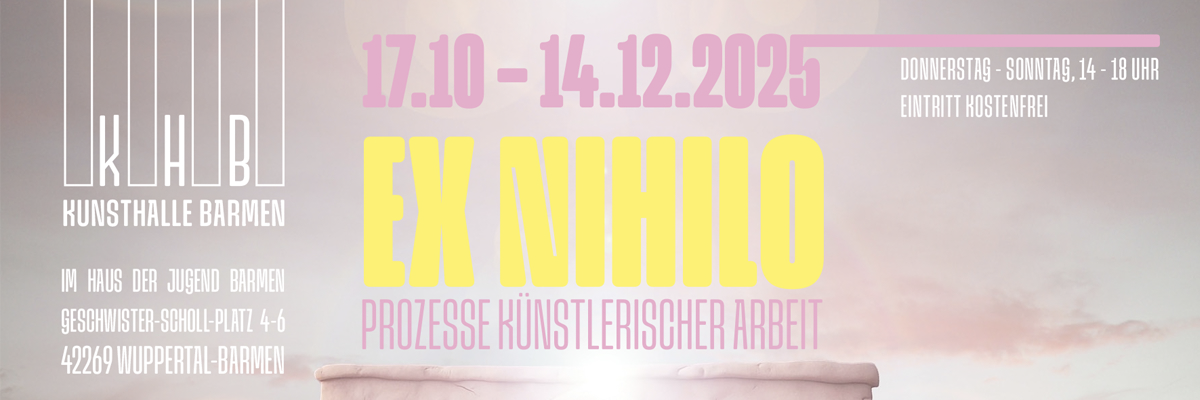
Natalie Brehmer
Confronting Careers
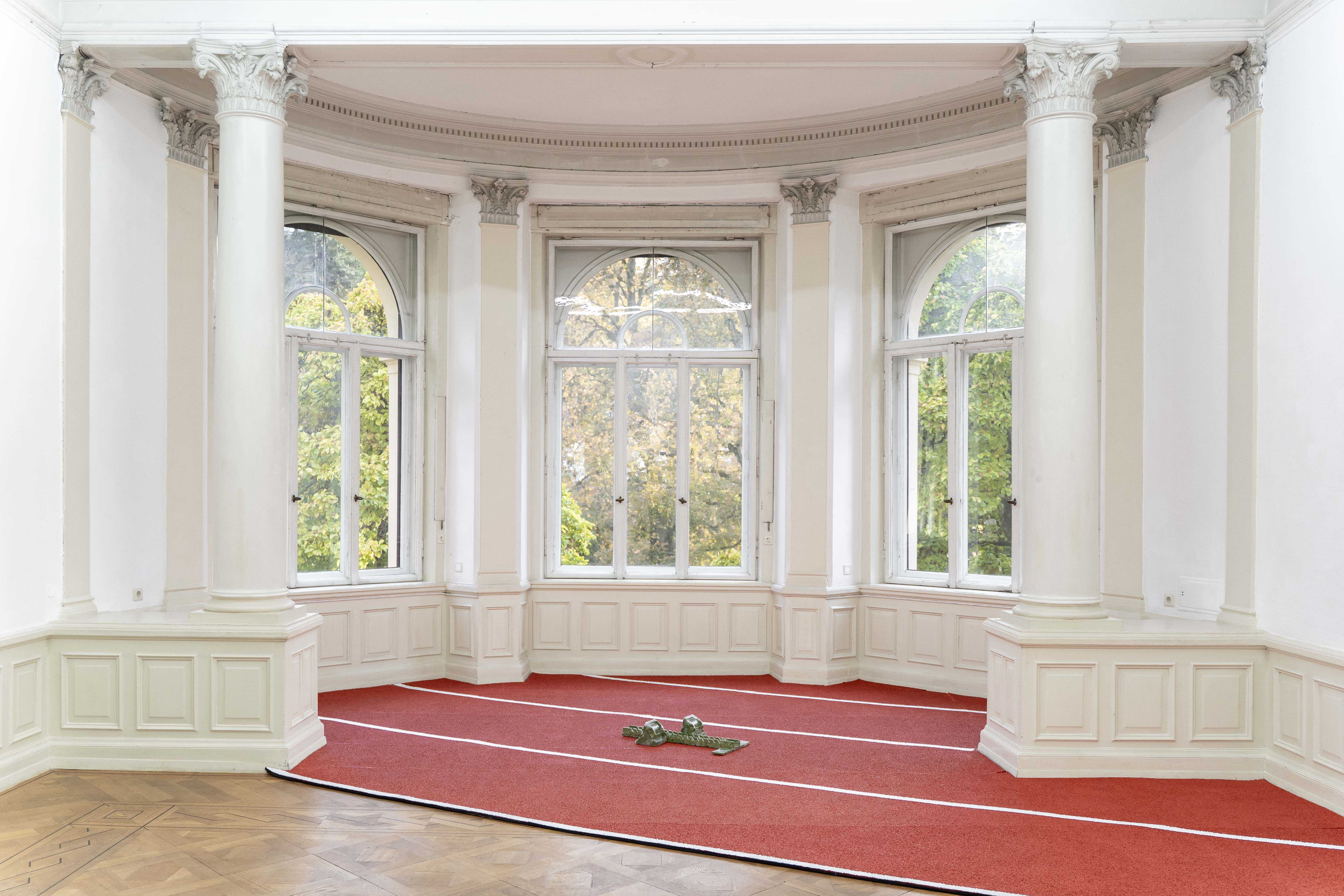
Exhibitionview, Laufbahn and Startblock, Villa Merkel
Advertisement

Startblock casted from Champagne bottles
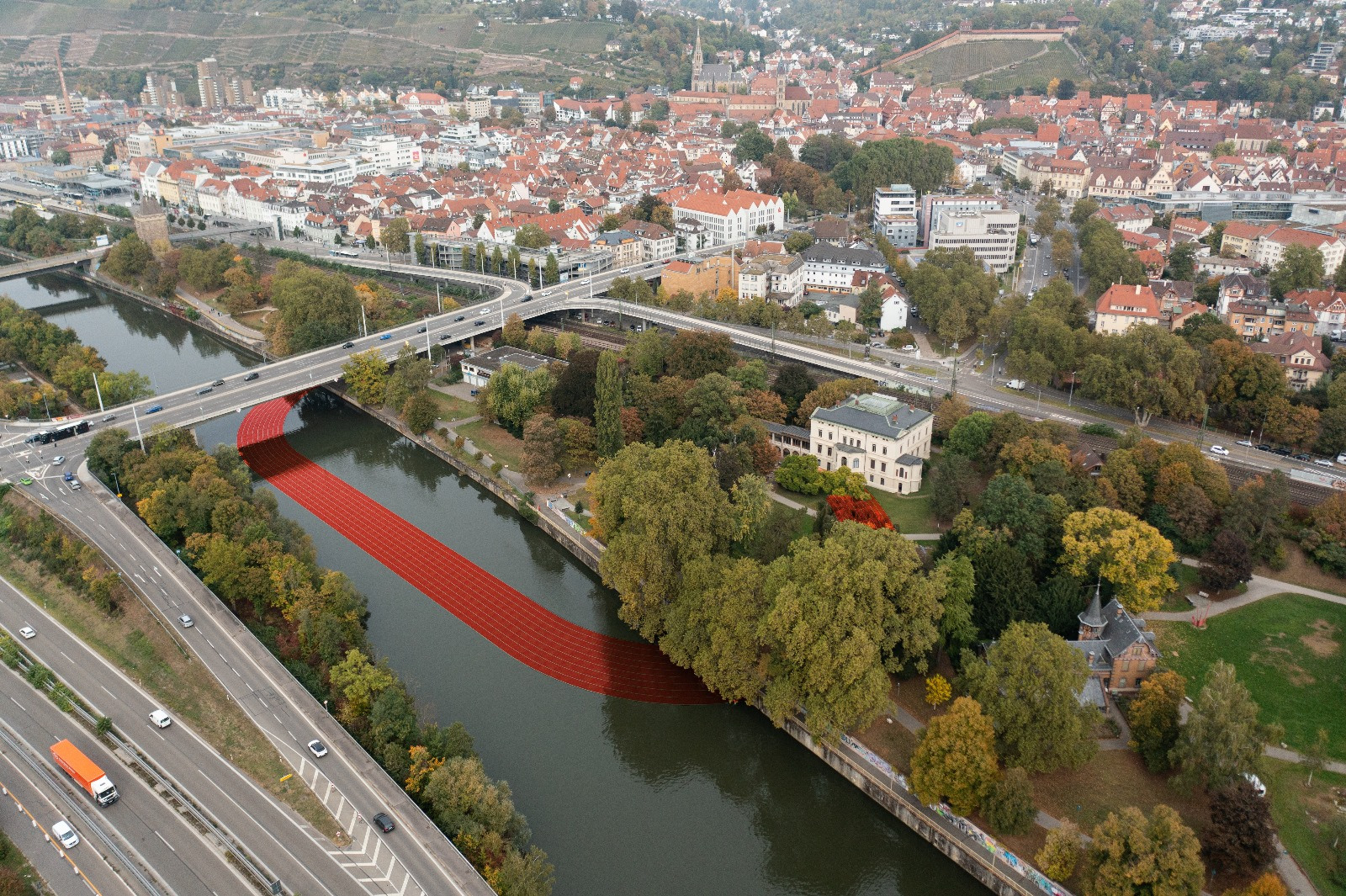
Visualisation of the imagined outdoor runway, Villa Merkel (Visualisation: Ginster Bauer)
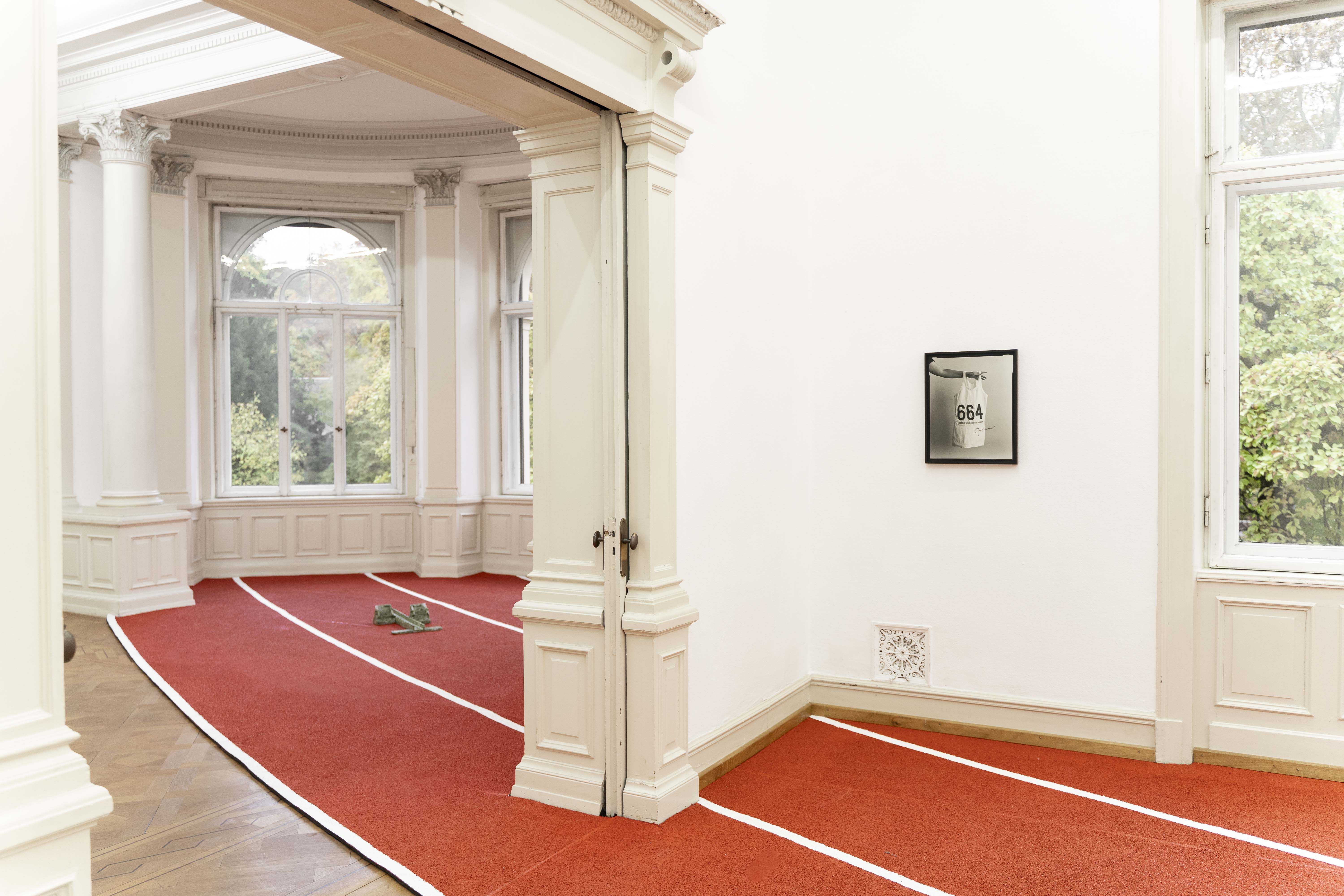
Exhibitionview, Laufbahn and Trikot, Villa Merkel
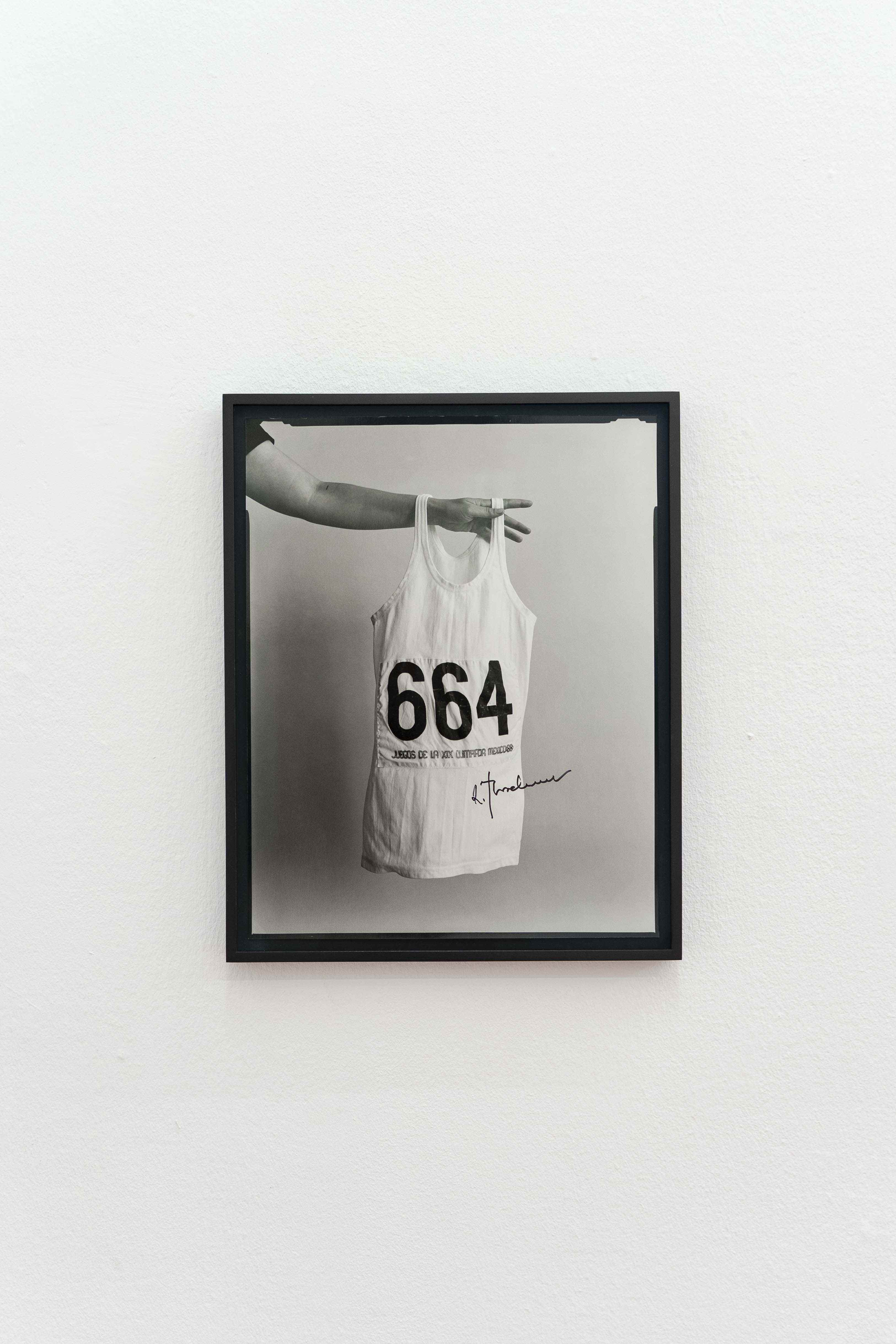
Exhibtion view, Gelatine-Silver Print signed, My father's original running jersey from the 1968 Olympics in Mexico
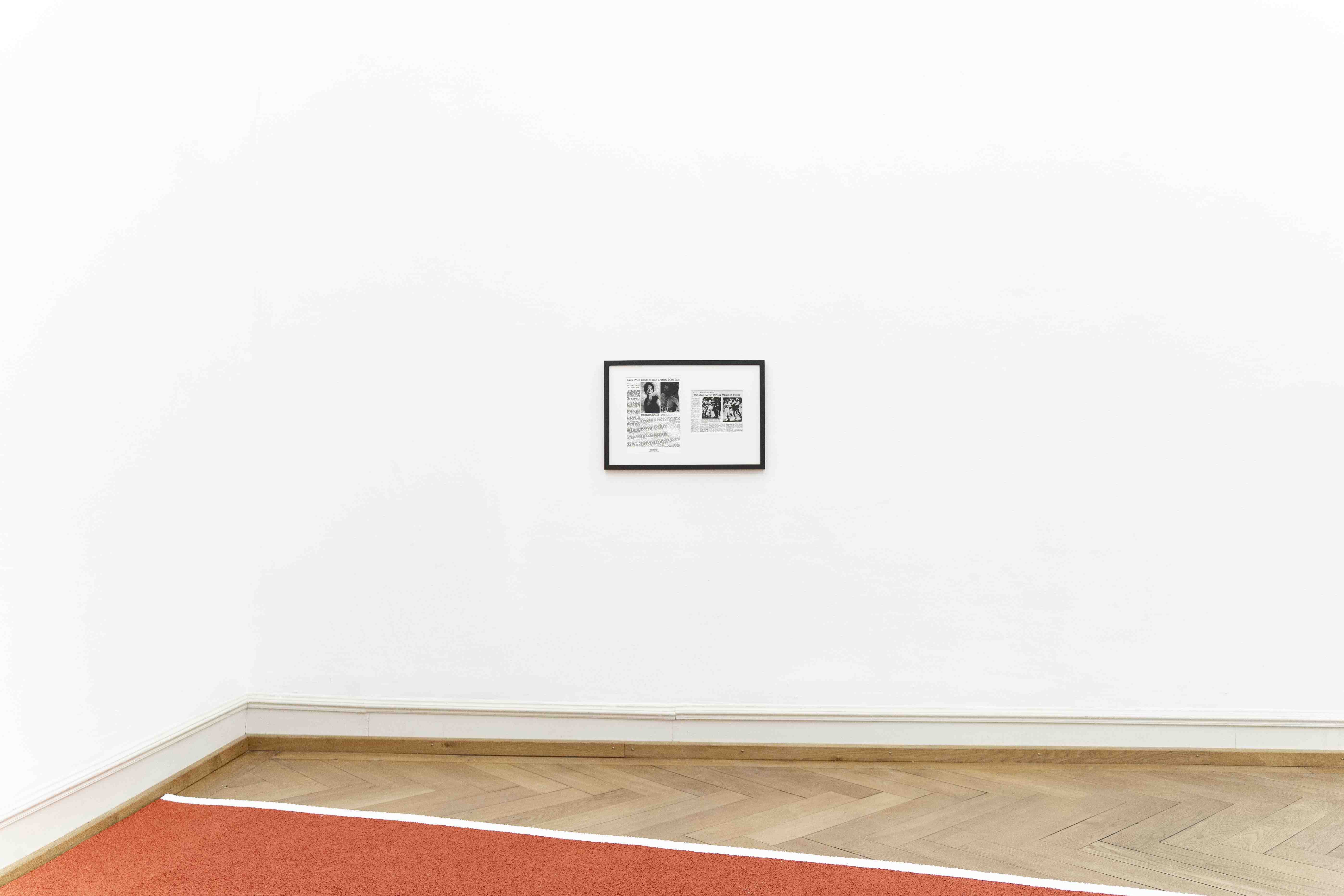
Exhibition view, facsimile, Kathrine Switzer pioneer, first woman to run a marathon with a race number, 1967
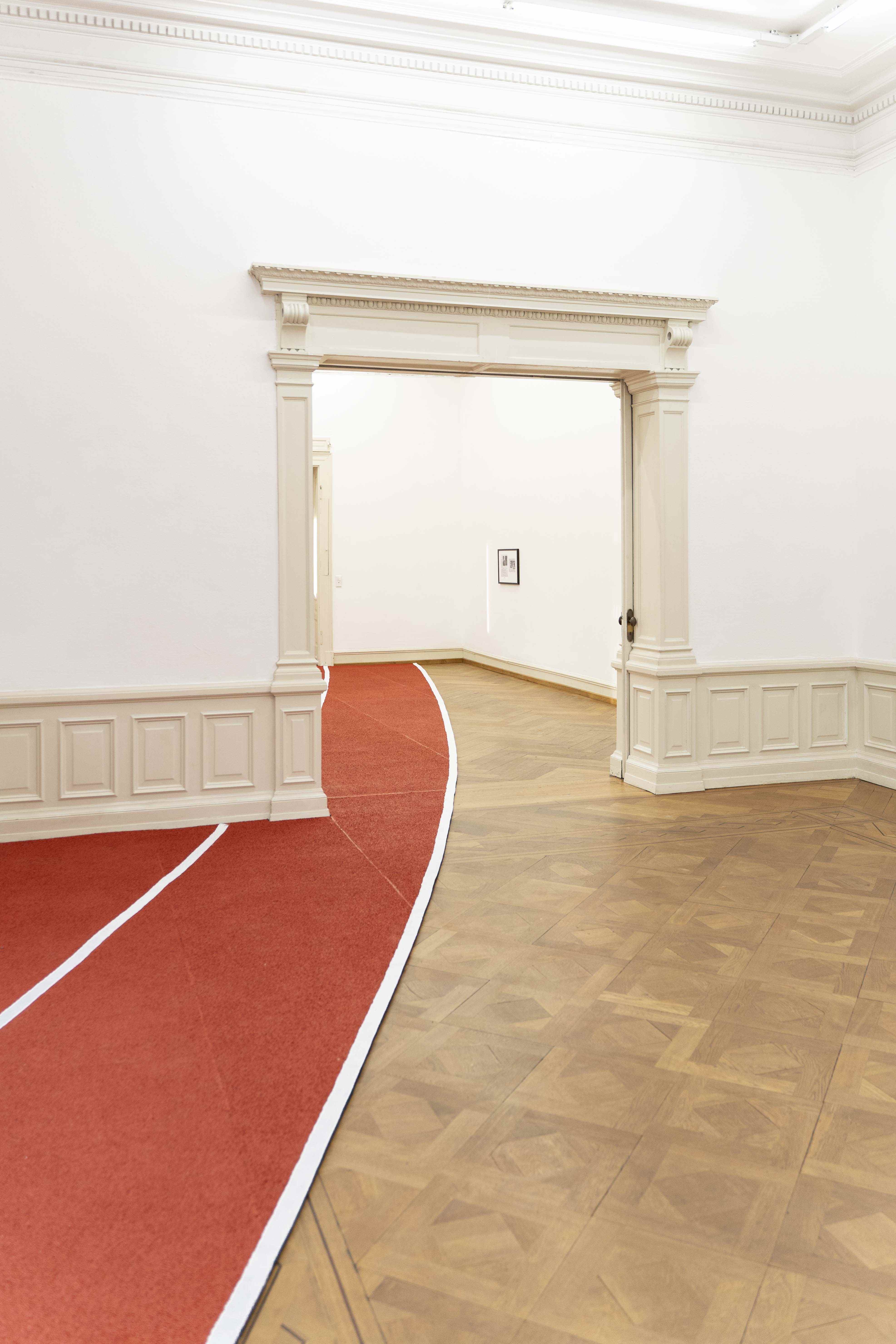
Exhibitionview, Laufbahn and Zeitungsartikel, Villa Merkel

Exhibitionview, Trikot and Laufbahn, Villamerkel
Confronting Careers
An aerial visualization of the Villa Merkel in Esslingen shows a broad red swathe of tartan track emerging from the window of the Neo-Renaissance building and graciously skimming the surface of the Neckar River before disappearing into a cluster of trees by the riverbank beneath a highway overpass. This composite photograph, a bit of ephemera produced during the research process for Natalie Brehmer’s mixed-media installation Confronting Careers, transposes the dimensions the 1968 Olympic Games track in Mexico City to an art institution and its surroundings in present day Germany. Although produced as a research visualization, this image is nonetheless significant in how it visually collapses various registers of space, temporality, and context, as well as how it serves as an aspirational document—an imagined artistic path that breaks beyond external boundaries.
The resonances between art and sport are many: a career in either demands an excess of discipline, training, creativity, innovation, focus, concentration, resilience, and perseverance.
Having emerged from a family of athletes, Brehmer knows this personally. Over the course of her own nascent career, she has noted numerous congruencies between the figure of the artist and that of an athlete, whether the dogged persistence to show up and “practice” or the determination necessary to “make it”—both in terms of actually doing the work and making a mark in one’s field. Brehmer’s recent mixed-media installation Confronting Careers triangulates her own practice as an emerging artist with her father’s career as an Olympic runner and that of Kathrine Switzer, a pioneering athlete who crashed the Boston Marathon in 1967, drawing ire from male competitors. Through Brehmer’s intricate handling of these various biographical layers, including her father’s participation in the 1500-meter race at the 1968 Olympic Games, Confronting Careers mines the myriad intersections between these stories to create a transtemporal self portrait of an artist in formation that asks broader questions about space, authorship, competition, exclusion, practice, and achievement.
An expanse of tartan track, a material first used in the 1968 Olympics, cuts through the rooms of the Villa Merkel. Installed at a 1:1 scale, Brehmer transposes the dimensions and material of the track that her father and other athletes competed upon in Mexico into the space of her own exhibition. This gummy crimson surface spans two rooms of the villa, providing a passage between photographic and sculptural work that serves both as a narrative path and a spatial modulator. Brehmer installs her works in conversation with the trajectory of the track, which creates atmospheric pockets in the installation that range from claustrophobic to expansive. A glass sculpture of a runner’s starting block made from the glass of champagne bottles recycled from major commercial events like Art Basel and the Berlin Art Week is poised expectantly facing the window where one can easily imagine an invisible runner continuing her course outside in a blaze of glory. Nonetheless, the fragility of sculpture’s material and the imagined weight of the absent body pressing against its brittle surface also awakens harsher associations, which are mirrored in the installation of a work related to Kathrine Switzer’s participation in the 1967 Boston Marathon. While Brehmer’s champagne starting block and a signed photograph of her father’s sporting tricot invite being viewed from the vantage of the tartan track, to catch a closer glimpse of the facsimiles of news articles about Switzer—which elide her groundbreaking achievement to focus on her physical beauty or the role her male running friends played in shaking off the thugs who attempted to exclude her from the race—entails being aggressively pushed to the side, kicked off the track, like the runner herself. In a time of rampant self-optimization, a running track can also be interpreted as a kind of hamster wheel, particularly as it relates to the numerous external forces that determine a young artist’s success in their field. As the example of Switzer’s 1967 marathon run reminds us, talent and grit alone don’t determine whether you are actually welcome to play the game. Natalie Brehmer’s Confronting Careers imaginatively stages a fluctuating complex of starting points and obstacles, using the space of the arena and that of the institution to question how the concept of boundaries might be redefined as dynamic intersections rather than rigid barriers, and what kinds of implications this perspective might have for understanding the fluidity of identity and experience.
Jesi Khadivi
